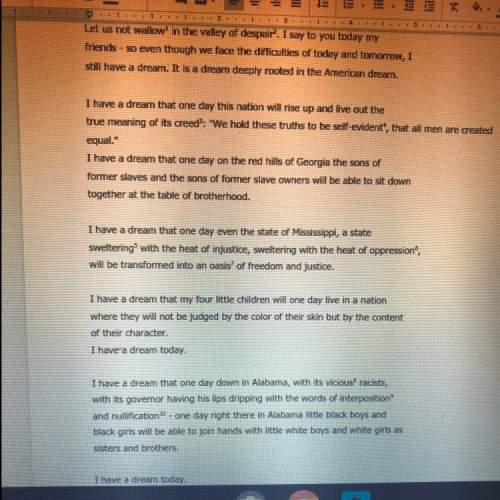
English, 24.06.2019 10:20 amandabarriksofficia
He umwa’s efforts were so successful that they influenced practices in other trade unions as well. in 1901, arguments raised by umwa members led to the repeal of discriminatory practices at the birmingham trades council, the organization to which all unions in the city of birmingham belonged. two years later, in 1903, the coal companies began to assert significant power against the union, denying union contracts and instituting policies of hiring only non-union employees. in 1908, under the auspices of the alabama coal operators association, company owners voted to cut worker wages by seventeen percent. what is the effect of telling this story in chronological order? it the reader understand how the umwa affected labor movements through history. it the reader understand how the umwa and the coal companies began working toward the same goal. it the reader understand how the coal companies responded to the repeal of discriminatory practices. it the reader understand how the coal companies eventually started following nondiscriminatory practices.

Answers: 1


Another question on English

English, 22.06.2019 00:30
The difference between a guess and an inference is a. an inference is not supported by evidence while a guess is. c. a guess and an inference are the same thing. b. a guess is not supported by evidence while an inference is. d. none of the above
Answers: 2


English, 22.06.2019 04:00
Explain the effect of the rhetorical questins for the below paragraph."i pinched myself: was i still alive? was i awake? how was it possible that men, women, and children were beiing burned and that the world kept silent? no. all this could not be real. a nightmare soon i would wake up with a start, my heart pounding, and find that i waas back in the room of my childhood, with my "
Answers: 1

English, 22.06.2019 07:50
She took up a scalpel and slit the monkey's abdomen, making a slow and gentle cut, keeping the blade well away from her gloved fingers. the spleen was puffed up and tough, leathery, like a globe of smoked salami. she did not see any bloody lesions inside this monkey. she had expected that the monkey's interior would be a lake of blood, but no, this monkey looked all right, it had not bled into itself. if the animal had died of ebola, this was not a clear case. she opened up the intestine. there was no blood inside it. the gut looked okay. then she examined the stomach. there she found a ring of bleeding spots at the junction between the stomach and the small intestine. this could be a sign of ebola, but it was not a clear sign. it could also be a sign of simian fever, not ebola. therefore, she could not confirm the presence of ebola virus in this animal based on a visual inspection of the internal organs during necropsy.
Answers: 3
You know the right answer?
He umwa’s efforts were so successful that they influenced practices in other trade unions as well. i...
Questions

History, 31.07.2019 10:30

History, 31.07.2019 10:30

Physics, 31.07.2019 10:30



History, 31.07.2019 10:30

Mathematics, 31.07.2019 10:30



History, 31.07.2019 10:30


Mathematics, 31.07.2019 10:30


History, 31.07.2019 10:30



Geography, 31.07.2019 10:30



Mathematics, 31.07.2019 10:30




